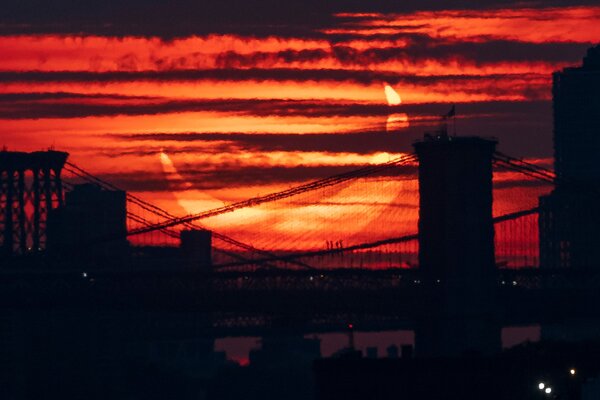While there are no cameras aboard the spacecraft, NASA is providing updates as the telescope deploys its mirrors. Here’s what you need to know.
The most powerful telescope ever launched into space is nearing the end of a meticulous assembly process that has kept astronomers on edge for weeks.
Since its Christmas morning launch, the James Webb Space Telescope has made all the right moves. Now it is entering the final stretch of its complex deployment phase.
In these terminal steps, two panels on either side of the telescope’s array of 18 gold-plated hexagonal mirrors, folded back during launch, must snap into place to complete Webb’s honeycomb-like reflector. The 21-foot-wide mirror sends light from the cosmos into a secondary mirror, which then bounces the light into the telescope’s main infrared sensor.
Unfolding the mirrors is a crucial milestone along the way to using the telescope for scientific studies of the Big Bang, exoplanets, black holes and our solar system. Once it is complete, NASA considers the telescope “fully deployed.”
When will the Webb telescope finish unfolding and how can I watch it?
The telescope’s unfolding phase is expected to wrap up Saturday morning, after the mirror segment’s right-side panel of its three remaining mirrors is secured into place. The left side completed its deployment on Friday, a process that took five-and-a-half hours.
On Saturday, engineers will command the telescope to release a set of latches that held the panel in place during launch. Then, for about five minutes, the panel will slowly swing open so that the three hexagonal mirrors tessellate snugly with the other 15.
During the operation, NASA will host a livestream on NASA TV and YouTube beginning at 9 a.m. Eastern time Saturday. It will show mission managers monitoring the deployment from the flight control room of the Space Telescope Science Institute in Baltimore, the telescope’s central operations hub. Deployment is expected to end a few hours later, around 1:30 p.m.
But you won’t be able to see what’s happening on the telescope itself.
Why aren’t there cameras on the telescope?
Rockets and some spacecraft carry built-in cameras so engineers on Earth can monitor their behavior in space. So, one would expect engineers to pack cameras aboard the James Webb Space Telescope, the most expensive and technically complex observatory ever launched to space, with 344 “single points of failure.”
Think again.
There are no monitoring cameras on the telescope. Instead, engineers depend on switches, sensors and motors to track its health during deployment.
NASA ditched the idea of including surveillance cameras on Webb because of technical complexities and risk. The telescope’s novel size and shape — with one side of its sunshield deflecting enormous amounts of heat and sunlight and the other instrument-heavy side basking in frigid darkness — would require multiple custom-built cameras. Wires and mounts for those cameras would add weight and risk to an already heavy telescope, the agency explained in a blog post.
“It’s not as straightforward as adding a doorbell cam or even a rocket cam,” said Paul Geithner, NASA’s deputy project manager for the technical side of the Webb program.
What has happened to the telescope so far?
Since Webb’s launch, engineers have completed over a dozen main steps in the deployment phase to bring the telescope to its final form, involving hundreds of moving parts such as switches, motors, pulleys and cables. The process began less than 30 minutes after launch last month, when Webb’s solar array deployed — the only step caught on video as the telescope parted ways in space with its rocket, which had an onboard camera.
The telescope has passed a number of milestones since, doing well to defuse astronomers’ anxiety and quell fears that a structure as intricate as Webb was bound to run into snags along its million-mile trek to the place in space where it will stay. The telescope powered on, deployed antennas, mechanically unfolded various limbs and, in the most technically complex milestone, delicately stretched taut five layers of a tennis-court-size plastic sheet designed to shield the telescope’s ultrasensitive camera sensors from the sun’s heat.
Why is the telescope so important to scientists?
The Webb telescope was designed to probe a crucial stretch of early cosmic history, known to astronomers as the dark ages.
Cosmologists surmise that the first stars appeared when the universe was only about 100 million years old. (Today it is 13.8 billion years old.) The farthest and earliest galaxy seen by astronomers, using the Hubble Space Telescope, dates to when the universe was older, 400 million years after the Big Bang. What happened during those intervening 300 million years when the universe took luminous flight, how the Big Bang turned into a sky full of constellations and life, is a mystery.
The telescope will also help astronomers better study supermassive black holes at the center of galaxies and planets orbiting other stars in our galaxy.
To achieve these scientific observations, the Webb telescope relies on a primary mirror 6.5 meters in diameter, compared with the mirror on the Hubble, which is 2.4 meters. That gives it about seven times as much light-gathering capability and thus the ability to see further into the past.
Another crucial difference is that it is equipped with cameras and other instruments sensitive to infrared, or “heat,” radiation. The expansion of the universe causes the light that would normally be in visible wavelengths to shift into longer infrared wavelengths normally invisible to human eyes.
Engineers had to invent 10 new technologies along the way to make the telescope more sensitive than the Hubble. Over-optimistic schedule projections, occasional development accidents and disorganized cost reporting dragged the timeline out to 2021 and ballooned the overall cost to $10 billion.




























